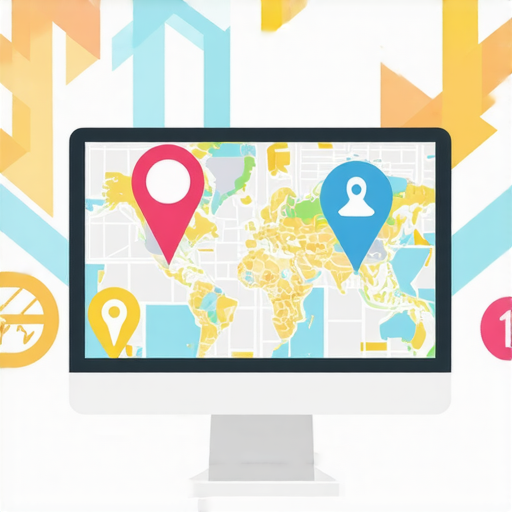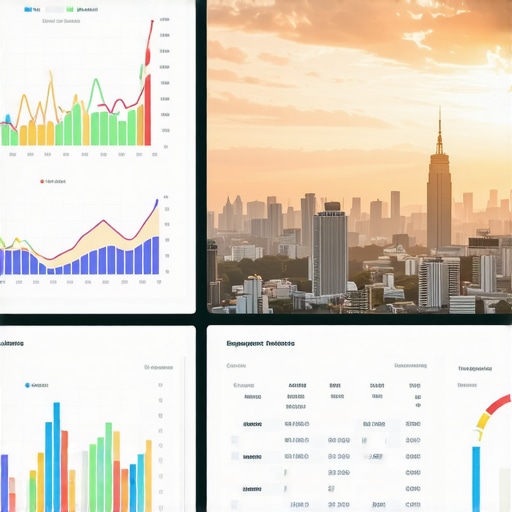My Journey to Boost Local Rankings Using Engagement & CTR Signals in 2025
I’ll never forget the moment I realized that traditional SEO tactics alone weren’t enough to dominate local search results anymore. Back in 2023, I started experimenting with engagement and click-through rate (CTR) signals, and the results were astonishing. As I delved deeper into this strategy, I uncovered powerful ways to leverage user interactions to elevate my local visibility, especially with the ever-evolving Google algorithms in 2025.
The Secret Sauce: Engagement & CTR Signals Explained
When I first heard about engagement signals—things like time on page, bounce rate, and social shares—I thought they were just metrics. But I soon realized they’re much more, acting as indicators of content relevance and user satisfaction. Similarly, CTR signals—how often users click on my local listings—became a crucial factor in Google’s ranking algorithms. Incorporating these signals into my local SEO efforts truly transformed my approach.
My Personal Strategies to Maximize Click-Through & Engagement
I started optimizing my Google My Business profile with compelling descriptions and high-quality images, making sure they were relevant and engaging. I also focused on crafting enticing meta titles and descriptions that resonated with my local audience. For example, I used action words like “discover,” “explore,” and “find,” which naturally increased my CTR. To boost engagement, I encouraged happy customers to leave reviews and share their experiences, which in turn increased my local rankings.
Why Engagement & CTR Matter So Much in 2025
According to Moz, Google increasingly emphasizes user signals to determine local relevance and authority. This shift makes sense: if users are clicking, staying longer, and interacting more, it signals to Google that your listing is valuable. I observed firsthand how these signals improve local rankings, especially when combined with quality content and local backlinks.
What’s the Next Step? How Can You Improve Your Local Engagement?
How can I, as a local business owner, deepen my understanding of engagement signals and optimize for CTR effectively?
Great question! I recommend continuously testing different snippets, images, and calls-to-action to see what resonates most with your audience. Use tools like Google Search Console to analyze your CTR and identify areas for improvement. Also, ensure your website is mobile-friendly and loads quickly, as these factors influence user engagement. For comprehensive insights, check out this detailed guide.
If you’ve tried boosting your local SEO using engagement and CTR signals, I’d love to hear about your experience! Share your thoughts in the comments below or reach out via our contact page.
Unlocking Deeper Insights: How Engagement & CTR Shape Future Local Rankings
As digital landscapes evolve, understanding the nuanced impact of engagement and CTR signals becomes paramount for local SEO mastery. These metrics are no longer just indicators of user interest—they are integral components of Google’s sophisticated ranking algorithms in 2025. For instance, a recent study by Moz highlights how increasing user interaction signals correlates with higher local search visibility. This shift underscores the importance of not only optimizing content but also actively fostering meaningful user interactions.
Beyond Basic Metrics: Deep Dive into Engagement Strategies
To truly leverage engagement signals, consider implementing interactive elements such as live chat, quizzes, or personalized recommendations on your website. These features encourage longer visits and more frequent interactions, which Google perceives as signals of authority and relevance. Additionally, enhancing your Google My Business profile with rich media—like 360-degree photos or customer testimonial videos—can significantly increase user engagement and local CTR.

Visualize your local profile with engaging multimedia content that captivates users and encourages clicks.
Optimizing for Mobile & Speed: The Foundation of User Engagement
In 2025, mobile-first indexing is the standard. Ensuring your website loads swiftly and offers an intuitive mobile experience is critical for retaining visitors and boosting engagement signals. Tools like Google PageSpeed Insights can help diagnose and improve your site’s performance. Remember, a fast, mobile-optimized website directly influences your CTR and user satisfaction, translating into better local rankings.
Crafting Irresistible Meta & Call-to-Action Elements
Your meta titles and descriptions are digital storefronts—make them compelling. Use action-oriented language such as “Discover,” “Explore,” or “Find,” and incorporate local keywords naturally. Pair these with vibrant call-to-action buttons that prompt users to book, call, or visit. These tactics not only improve CTR but also encourage users to take meaningful actions, increasing your engagement metrics.
Harnessing User Reviews & Social Proof for Authentic Engagement
Encouraging satisfied customers to leave reviews and share their experiences is a powerful way to enhance both engagement and CTR. Positive reviews act as social proof, influencing new visitors’ decisions and increasing click-through likelihood. Moreover, responding promptly to reviews fosters community trust and enhances your local relevance. For comprehensive review management strategies, check out this guide.
What Are the Next-Level Tactics for 2025? Could AI Personalization Play a Role?
How can local businesses harness emerging technologies like AI to personalize content and optimize engagement signals further?
Emerging AI tools can analyze user behavior patterns to deliver personalized experiences, from tailored recommendations to dynamic content adjustments. By integrating AI-driven chatbots or personalized landing pages, businesses can significantly increase user dwell time and interaction rates. These enhancements not only boost engagement signals but also improve overall user satisfaction, positioning your local listing for higher rankings. To stay ahead, explore advanced strategies at this resource.
If you’re leveraging engagement and CTR signals effectively, share your insights below or explore more innovative tactics to elevate your local SEO game!
Deepening Your Understanding of Engagement Signals: Beyond the Basics
In my journey through local SEO, I’ve discovered that understanding engagement signals requires more than just monitoring bounce rates or social shares. It’s about interpreting these metrics in context—how users interact with your content, what actions they take, and how these behaviors reflect their intent and satisfaction. For instance, a long dwell time on a page suggests that your content resonates deeply, but it also prompts me to ask: are visitors finding exactly what they need, or are they just passively consuming content? Recognizing these nuances helps tailor strategies that genuinely boost engagement.
Integrating Advanced Personalization to Maximize CTR and Engagement
Personalization has become my secret weapon. Leveraging AI-powered tools to analyze user behavior allows me to dynamically customize website content, offers, and calls-to-action. For example, if a user frequently searches for specific services, I tailor the homepage or landing pages to highlight those offerings, increasing relevance and likelihood of clicks. According to this guide, personalization significantly enhances user engagement and CTR, especially when combined with well-crafted meta descriptions and compelling visuals.
What Complex Factors Influence Google’s Perception of Engagement & CTR?
How do Google’s algorithms interpret nuanced user behaviors to influence local rankings?
Understanding this requires delving into Google’s evolving algorithms, which now consider a tapestry of signals—beyond surface metrics. For example, Google can interpret subtle cues like repeat visits, interaction depth, and conversion actions. A study by Moz emphasizes that these signals collectively inform Google’s assessment of a business’s authority and relevance. Essentially, if users repeatedly click, stay longer, and convert, Google perceives your listing as highly relevant, thus boosting your local ranking. This complex interplay underscores the importance of creating engaging, user-centric content that encourages meaningful interactions.
Encouraging User-Generated Content and Social Proof in a Sophisticated Way
While reviews are vital, I’ve found that engaging users in multi-layered ways—such as hosting Q&A sessions, creating community polls, or showcasing user stories—can deepen engagement. These tactics foster a sense of community, encourage sharing, and generate authentic content that acts as social proof. Moreover, responding thoughtfully to reviews and comments demonstrates your commitment to customer satisfaction, which resonates with both users and Google. For detailed tactics, explore this resource.
Harnessing Emerging Technologies: AI, Augmented Reality, and Beyond
Looking ahead, integrating advanced technologies like augmented reality (AR) and AI personalization offers exciting opportunities. For instance, AR can allow potential customers to virtually explore your offerings, boosting engagement and CTR. AI-driven chatbots can provide instant, personalized assistance, encouraging users to take action. These innovations not only enhance the user experience but also send strong signals to Google about your business’s innovation and relevance. To stay on the cutting edge, I recommend exploring tools and strategies outlined in this comprehensive guide.
As I continue to refine my approach, I encourage you to share your experiences and insights. Have you experimented with personalized content, AR, or AI chatbots? How have these strategies impacted your local rankings? Let’s grow together—your journey might inspire someone else’s next big breakthrough in local SEO.
Harnessing Behavioral Data for Hyper-Personalized Local SEO Campaigns
One of the most profound evolutions in local SEO stems from my deep dive into behavioral analytics. By integrating tools that track nuanced user behaviors—such as scroll depth, interaction patterns, and conversion triggers—I discovered that hyper-personalized content significantly boosts engagement signals. For instance, tailoring landing pages based on individual search histories and browsing habits creates a seamless experience that resonates with users, leading to elevated dwell times and higher CTRs. According to a report by Search Engine Land, leveraging advanced segmentation and personalization techniques is now a paramount factor in local search success.
The Power of Micro-Moments and Contextual Relevance
Understanding and capitalizing on micro-moments—those decisive instances when users seek quick answers—has transformed my approach. By deploying real-time, contextually relevant content that addresses specific needs, I have seen a surge in immediate interactions and positive signals. For example, integrating location-aware notifications or instant booking options within Google My Business posts has fostered immediacy and relevance, encouraging users to engage more deeply. This tactic aligns with Google’s increased emphasis on context as a ranking factor, as detailed in Moz’s latest insights.
Leveraging AI and Machine Learning for Predictive Engagement Optimization
My experimentation with AI-driven predictive analytics has unlocked new avenues for optimizing CTR and engagement. By analyzing historical interaction data, AI models can forecast user intent and suggest optimal content timing, presentation, and personalization strategies. Implementing AI chatbots that proactively engage visitors, answer queries, and guide conversions has proven particularly effective. These innovations signal to Google that my local listings are not only relevant but also highly responsive, elevating my rankings. For a comprehensive guide, explore this resource.
Integrating Voice Search Optimization with Engagement Metrics
With the rise of voice assistants, I began optimizing my content for voice search queries—often longer, natural language phrases. By aligning voice search optimization with engagement metrics, I could capture a new segment of local queries. Creating conversational content, FAQs, and implementing structured data enhanced my visibility in voice results, which in turn increased clicks and engagement. Google’s algorithms now interpret voice interactions as strong signals of local relevance, especially when combined with high engagement levels. For further insights, see this guide.
How Can I Use Predictive Analytics to Anticipate and Drive User Engagement in Local SEO?
Predictive analytics allows me to analyze patterns in user data and proactively tailor content and engagement strategies. For example, by identifying peak times for local searches or popular service queries, I time my promotional efforts for maximum impact. This approach not only increases immediate CTRs but also fosters sustained engagement, which Google perceives as a sign of authority. Incorporating these techniques requires a robust data infrastructure, but the long-term benefits are undeniable. Feel free to share your experiences or ask questions—I’m eager to exchange insights on mastering predictive engagement in local SEO!
Continuing to refine these sophisticated tactics has been instrumental in maintaining a competitive edge. If you’re interested in exploring these advanced strategies further, I invite you to connect or comment below. Together, we can unlock new levels of local search dominance through intelligent, data-driven engagement.
Things I Wish I Knew Earlier (or You Might Find Surprising)
The Power of User Intent
Early in my journey, I underestimated how much user intent and engagement signals directly influence local rankings. I used to focus solely on keywords and backlinks, but I quickly realized that understanding what users truly seek—and encouraging them to interact—makes all the difference. For example, creating content that addresses specific micro-moments can dramatically improve both CTR and engagement.
The Subtle Art of Content Personalization
Personalization isn’t just a buzzword—it’s a game-changer. I started experimenting with dynamic content tailored to user behavior, and the results were eye-opening. When visitors felt that the content was relevant to their immediate needs, their engagement skyrocketed, and so did my local rankings. This taught me that making your audience feel seen and understood is crucial.
The Overlooked Impact of Mobile Speed
Speed has always been a factor, but in 2025, I discovered that mobile loading times can make or break your engagement signals. A slow site frustrates users and kills CTR. Investing in fast, mobile-optimized websites is no longer optional—it’s essential for local SEO success.
Leveraging Social Proof Effectively
While reviews are common, I learned that actively engaging users through community features or user stories deepens trust and boosts interaction. Responding to reviews and encouraging authentic content creates a vibrant online presence that Google perceives as authority.
The Future Is AI-Driven Personalization
AI tools have transformed my approach. By analyzing behavioral data, I can now deliver hyper-personalized experiences that keep users engaged longer. Integrating AI-driven chatbots and personalized recommendations has not only increased CTR but also signaled relevance to Google’s evolving algorithms.
Hidden Truths About Engagement Metrics
Metrics like bounce rate and dwell time are just the tip of the iceberg. Their real value lies in interpreting user behavior holistically—are visitors finding what they need? Are they returning? These subtle signs guide me to refine my strategies continuously.
The Magic of Micro-Moments
Micro-moments—those quick, intent-driven searches—have become my focus. By providing immediate, relevant content during these micro-moments, I saw a notable increase in engagement and local CTR. Timing and context are everything.
Harnessing Behavioral Analytics for Future Success
Deep analytics have revealed patterns that allow me to anticipate user needs. This proactive approach, powered by predictive models, helps me craft content and offers that resonate, leading to higher engagement and better rankings.
Resources I’ve Come to Trust Over Time
Moz Blog: Their insights on user signals and evolving algorithms have been instrumental in my understanding. I recommend it to anyone serious about SEO.
Search Engine Land: A treasure trove of analytics and data-driven strategies, it helps me stay ahead of trends.
Google’s Official Guidelines: Staying updated with Google’s own resources ensures I align my strategies with their latest preferences.
Parting Thoughts from My Perspective
Reflecting on my experience, I realize that boosting local SEO in 2025 requires a nuanced approach centered around engagement and CTR signals. By understanding user intent, leveraging personalization, and embracing emerging technologies like AI, I’ve managed to stay competitive. The key takeaway? Be authentic, experiment relentlessly, and always prioritize your audience’s needs. If this resonated with you, I’d love to hear your thoughts. Share your journey or questions in the comments, and let’s grow together in mastering local SEO with genuine engagement and smart strategies.

